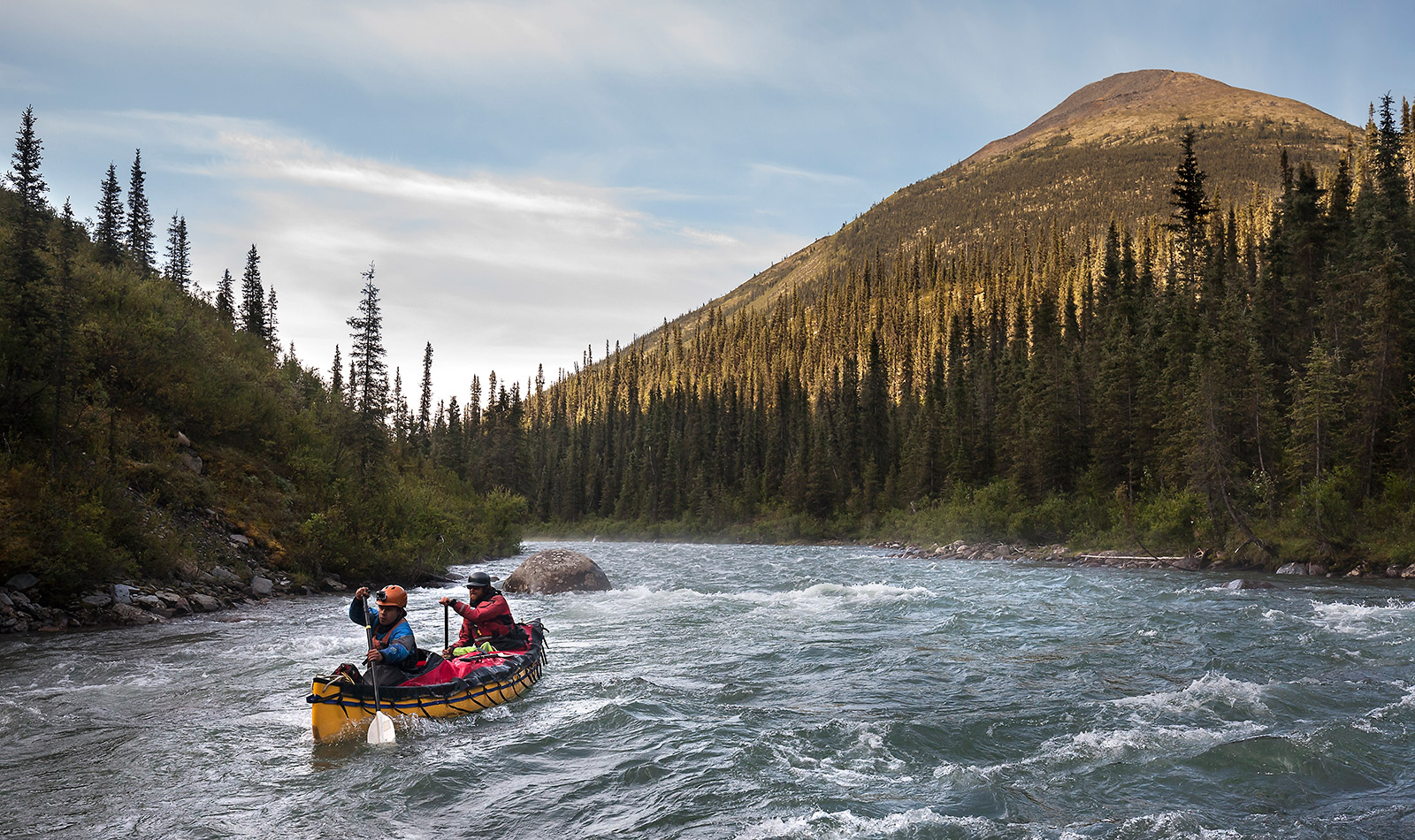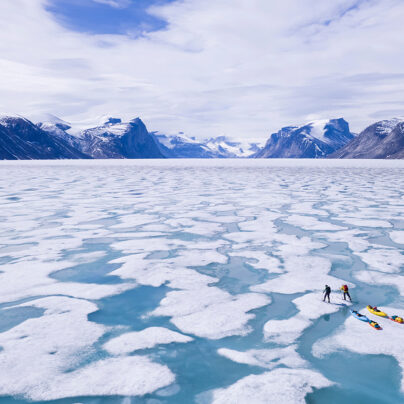Little Nahanni
Whitewater Canoeing in the Northwest Territories of Canada
Dustin Silvey
All around me the damp forests of Canada’s Northwest Territories did their best to prevent me from experiencing any sensation of dryness. I was cold, wet, and tired.
After pitching my tent in the rain for the fifth time in as many days, I sat down, still in my dry suit, to complete my daily facial ablutions with a wet wipe. All around me the damp forests of Canada’s Northwest Territories did their best to prevent me from experiencing any sensation of dryness. I was cold, wet, and tired; all of which increased the aching in my body. Lyn Elliott, the team leader of this canoe expedition down the Little Nahanni River, was seated in front of her tent when she looked up at me. ‘Dustin, this is a hard trip. I know it’s your first and you have little to compare it to, but it is a very hard trip.’
The 14-day canoe expedition down the narrow Little Nahanni River was my introduction to whitewater canoeing. The river, located in the Northwest Territories of Canada, runs through both Nahanni and Naats’ich’oh Canadian Park Reserves and has almost constant class III+ whitewater. Before this trip I had never paddled a canoe on anything other than flat water. Paddle strokes I knew? I had heard of a J-stroke when I participated in Scouts Canada as a youth, but was not 100% sure of its use. During the application process for the photojournalist position on this expedition with Parks Canada I thought I was applying to go down the river in a kayak (with which I had some experience). When I finally realised that I was mistaken, and it would be in a canoe, I saw the hurdle as a challenge to be overcome, and also as a way to increase my skill-set as a photojournalist. Prior to this trip I had photographed conflict areas around the world and thought that if I could handle zinging bullets from AK-47s, this would be a piece of cake.
We had problems with the weather from the start. In order to embark on our adventure, we had to be flown nearly two hours with all our gear to the border of the Northwest Territories and the Yukon. Weather prior to our expedition had not been promising. Our floatplane did not have radar, so the pilot had to follow Visual Flight Rules. Basically, if the pilot cannot see through the clouds, he/she cannot fly, as there is a high likelihood of a crash into the side of a mountain. Vanessa Murtsell, the communications expert on the expedition had been stuck in one of the Park Reserves for five days due to the storms we were currently experiencing, and had just returned in time to join us. That afternoon, there was a short break in the weather and we took off in a rush to beat the next incoming storm. Our six-person team left the safety of Fort Simpson, NWT, and flew by floatplane to the Flat Lakes, located just outside the borders of the Nahanni National Park Reserve. The pilot needed to fly high above the storm for visibility and the oxygen level in the unpressurised plane dropped, causing all of us (thankfully not himself and his copilot) to fall unconscious. The following headache was unbearable, and I went straight to bed that evening while the rest of the team feasted on celebratory steaks, including mine.
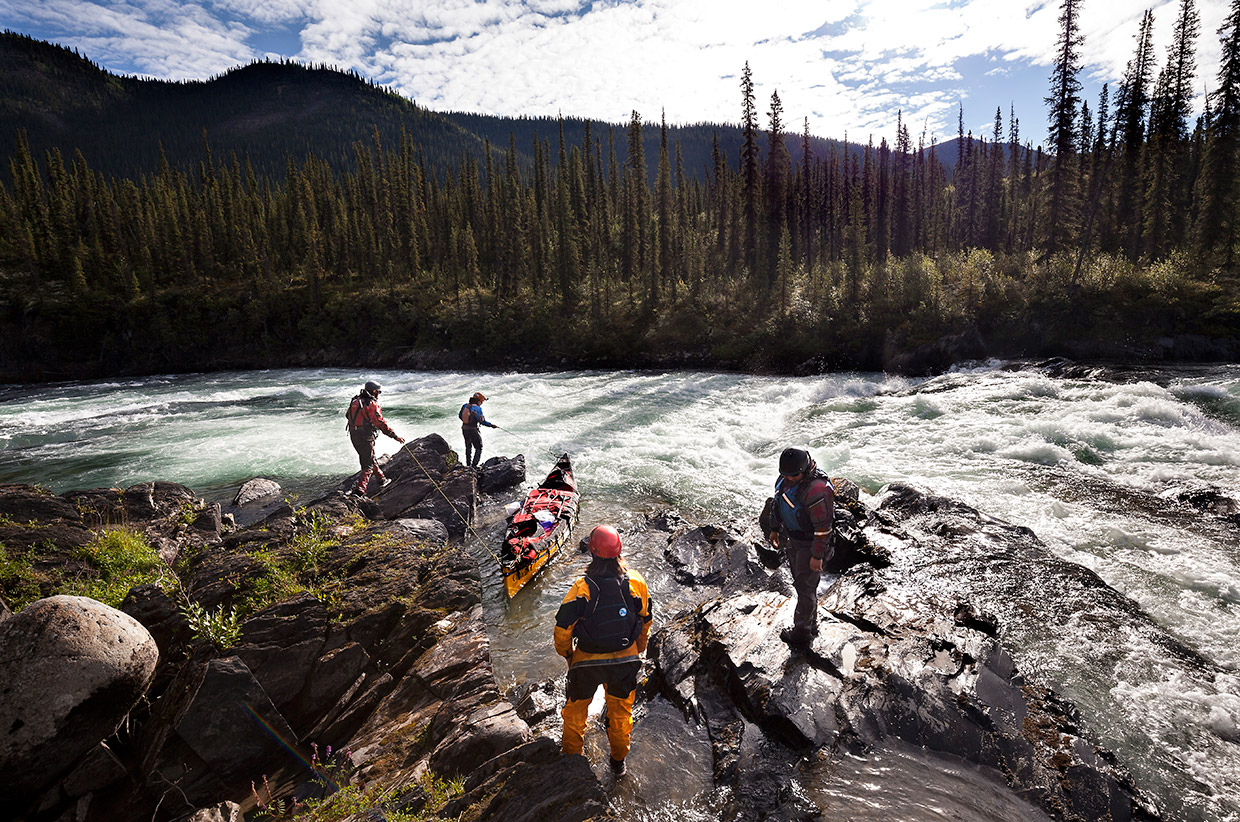
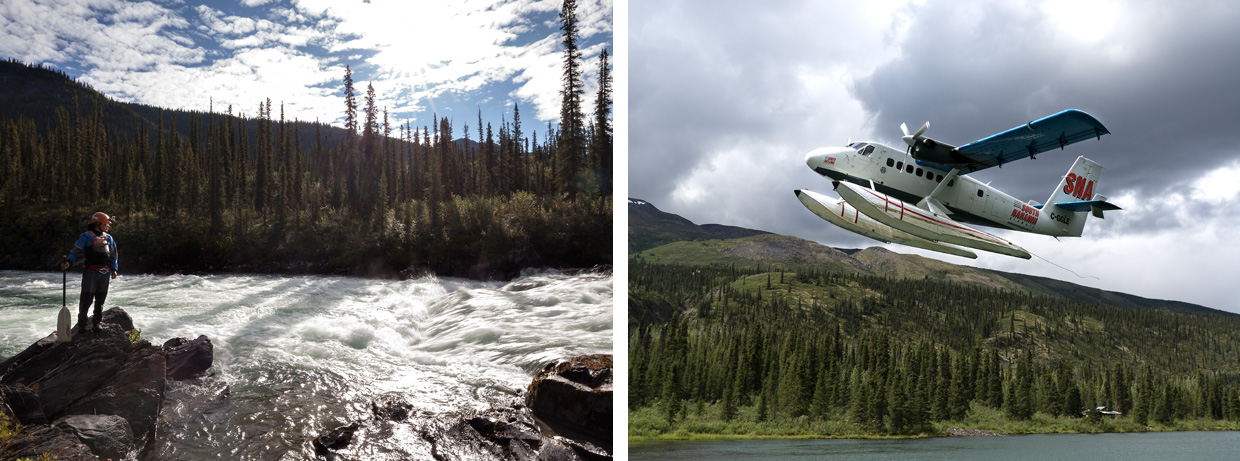
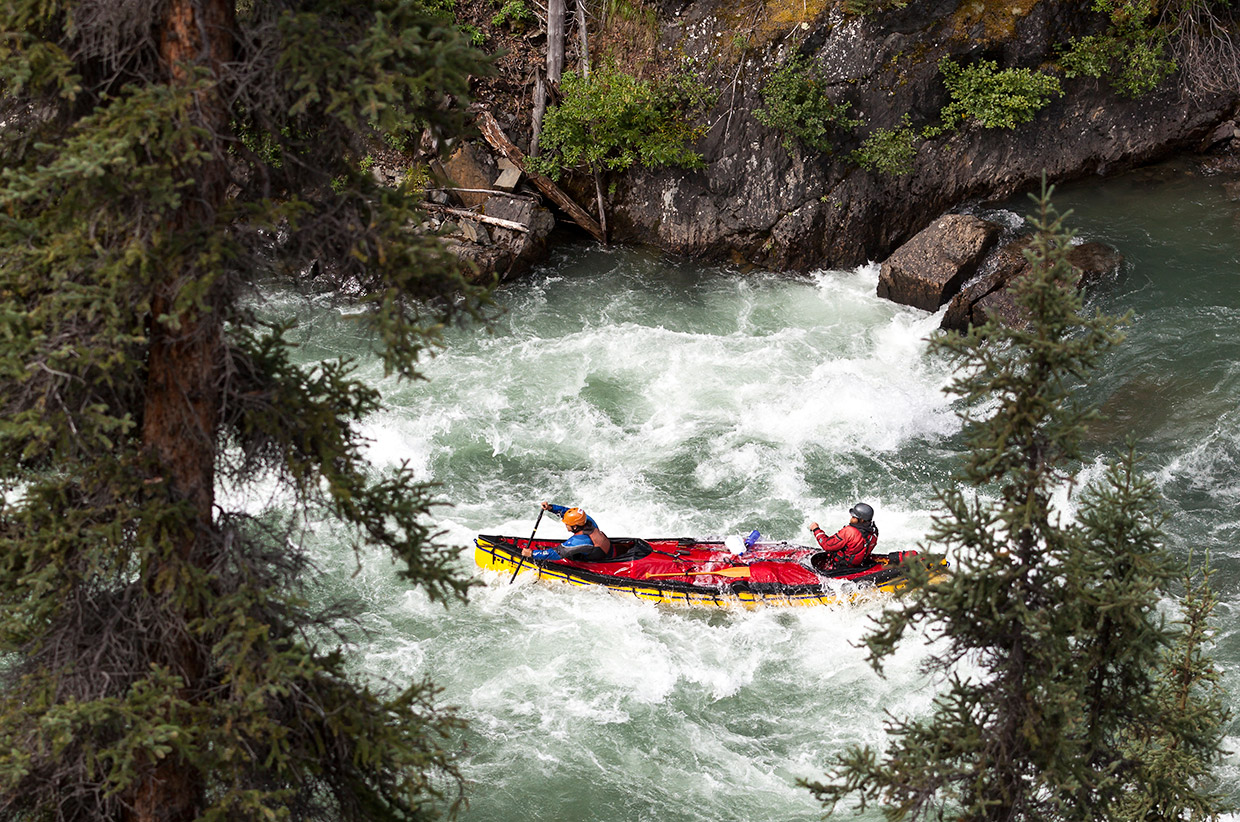
It wasn’t until the third day that we started down the river in the seldom ceasing rain and hail. We left the Flat Lakes finally beginning our decent down the Little Nahanni River as chunks of hail smacked us in the face. As we came around the first bend we noticed something large in the middle of the river. A massive cow moose stood, unfazed by the hail, grazing on the bottom of the riverbed. As we approached, it watched us with little concern until we (and the moose) realised that there was no way for us to divert the canoes around it. The cow trotted off towards the trees where two young calves awaited her return. This was one of many encounters with moose and bears in and around the river we would experience in this limitedly explored area of northern Canada.
On the seventh evening beside the river, I realised that I might have bitten off more of that particular piece of cake than I could chew. It had now rained for seven days straight and the group sat at the head of “Crooked Canyon”, the most intense white water section of the river. With fast, class III rapids through the narrow canyon, a couple class IV sections and one massive drop, it seemed we would have to portage around the canyon. I had been fighting the flu for the past three days and I did not think I could survive a full day portage up the canyon wall and then back down again to the river. As I sat patiently waiting for our white water expert and my boat mate Ken MacDiarmid to decide our fate, the never-ceasing rain pelted my helmet and reminded me of the men who went mad in Ray Bradbury’s “The Long Rain.” Ken finally returned with the verdict that we would camp at the head for the night and he and our other white water guide Pablo Vermeulen would run the canyon in all three canoes the following day.
That same evening, I thought I should take advantage of the never-setting sun of the summer Arctic and attempt to scout-out some locations to photograph the team paddling through the canyon the following day. After about two hours of clamouring through the brush (still in my dry suit), the sickness that was slowly eating away at my soul caught up with me and I had to head back to camp. Along the way I became dizzy and nauseous, and I leaned against a tree to rest. I turned around to check out my surroundings and noticed a black bear 100 feet away, watching me. We stood examining each other for a short time. It is unlikely the bear thought that I would be a worthwhile meal with the forest full of sweet summer berries – however, I still rose up tall to show it that I would give it a fight. At this, it thrust its nose up in the air and wandered off. I stumbled back to camp and went straight into my tent ignoring dinner, wanting the sweet relief that only sleep could give. The following day the canyon was run without any issue other than one leaky boat, which was easily patched. During the canyon run the storm broke allowing the sun to shine down on us for the remaining six days of the expedition.
It had now rained for seven days straight and the group sat at the head of “Crooked Canyon”, the most intense white water section of the river.
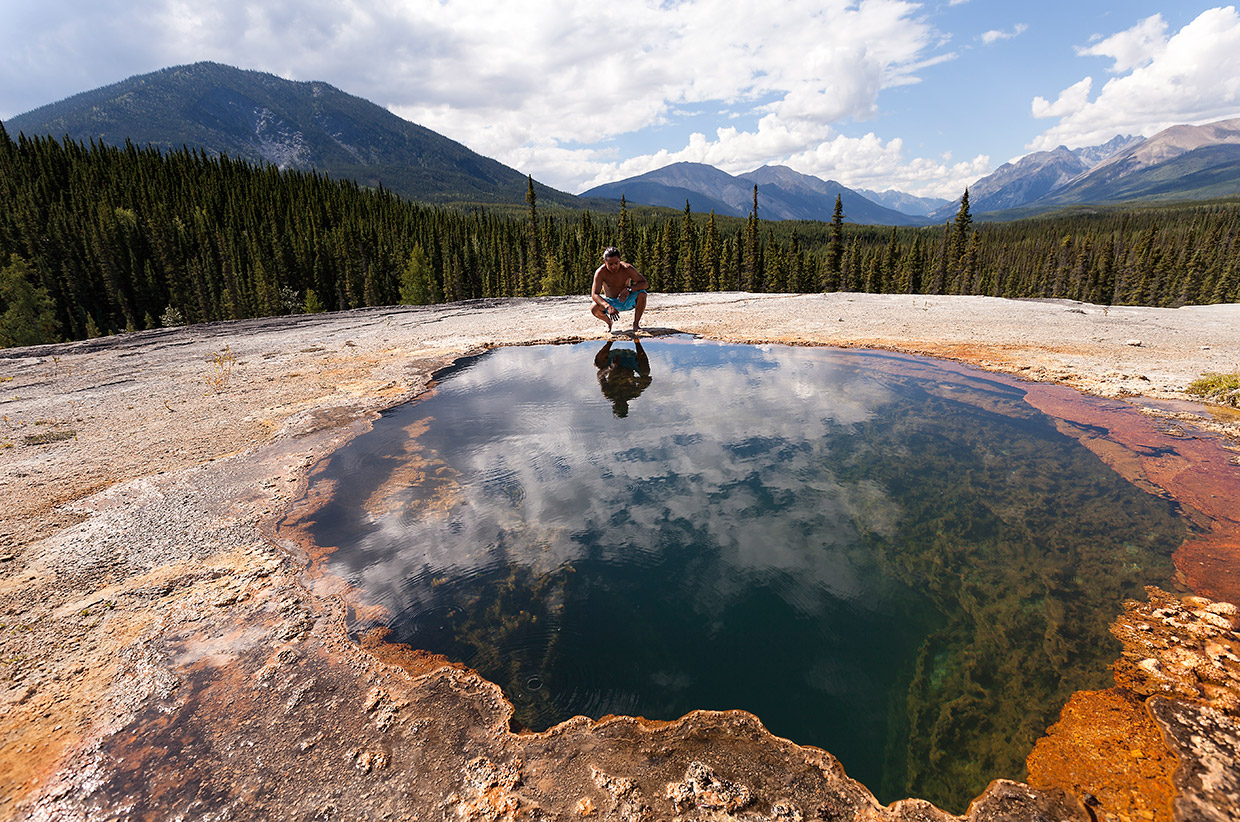
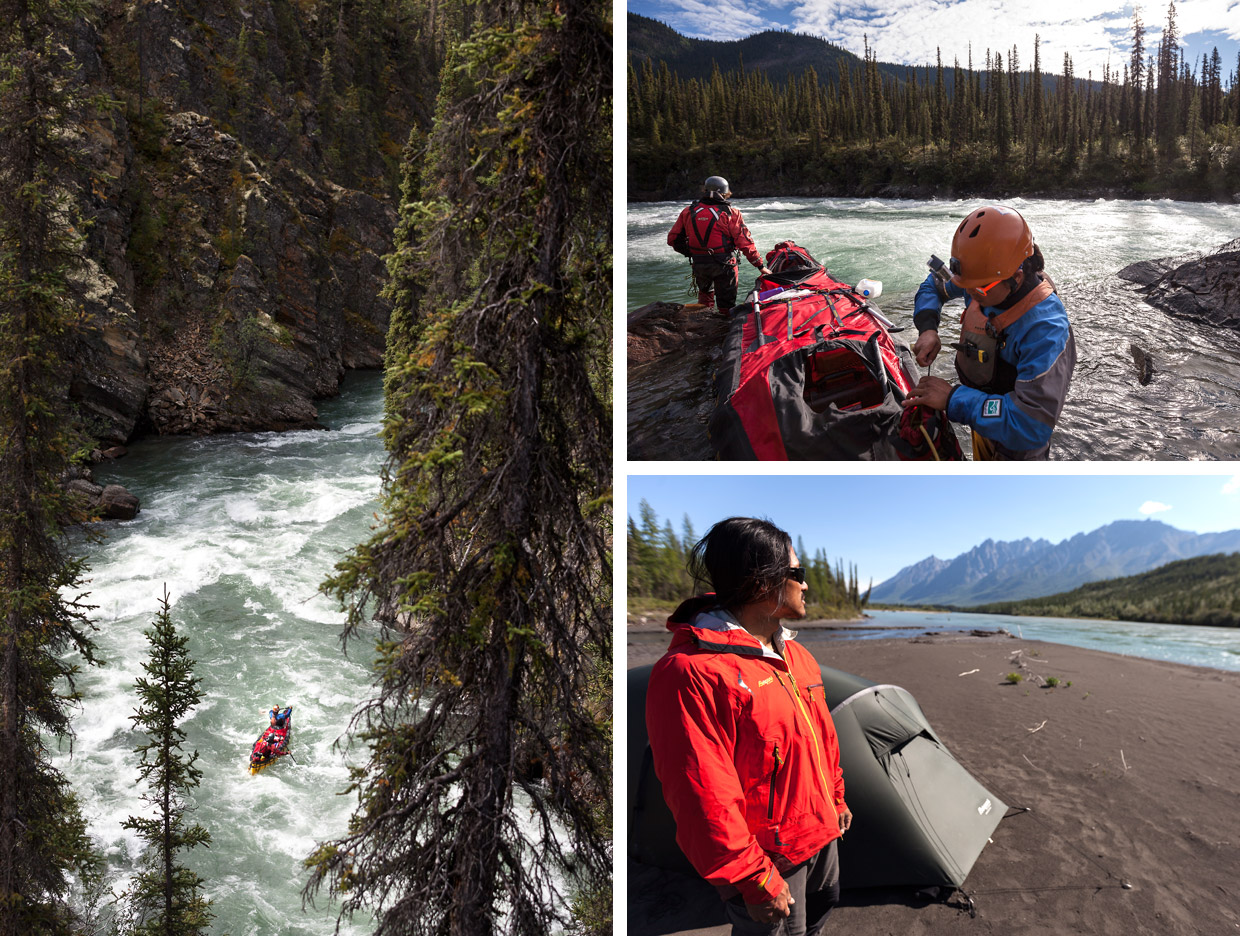
As Ken and I were barreling through one of the final rapids, I could here Ken’s voice screaming at me to paddle forward, but the waves were so high I couldn’t reach the water.
During our final day on the Little Nahanni River before coming to the confluence of the South Nahanni, I heard my boat mate, Ken’s, “river voice” for the second and final time. On this morning I awoke to enjoy my breakfast. My flu symptoms had ceased two days earlier, and I was one of the first packed up and ready to finish this river. Once we were in the boats however, something changed; I just was not feeling it. The intensity that I had maintained for the past nine days was not there. I paddled and did what I was told, but my mind was wandering somewhere else. Where I’m not sure, but I know it was not on the river and I almost paid dearly for this lapse in focus. As Ken and I were barreling through one of the final rapids, I could here Ken’s voice screaming at me to paddle forward, but the waves were so high I couldn’t reach the water. In order to get my paddle in deep in the water I leaned forward and here was where I made my mistake. By lifting myself off the seat to lean I threw the dynamics of the canoe into chaos. ‘I was watching you two go through the rapids and your boat was almost completely on its side,’ David Lee, the other photojournalist on the expedition later told me. As the canoe was on the point of capsizing I heard Ken scream at the top of his lungs ‘You stay in this [expletive] boat!’ I dropped my butt down hard on the seat to keep me from falling out and in that moment the canoe smacked back down on the river and Ken took control. We rode the Little Nahanni River the rest of the way to the confluence with little chatter.
The last evening of the trip we had been warned that a bear was in the area. I found a nice ridge with an amazing view of the lake to set up my camp and enjoy the late night sun. It was a little bit away from the others, but I thought being further away from the food cache was smarter. When we turned in for the night, sleep came on fast for me. I was excited at the thought of being able to look in a mirror the next day, to shave, shower, put my butt on a toilet seat, and call my partner and parents.

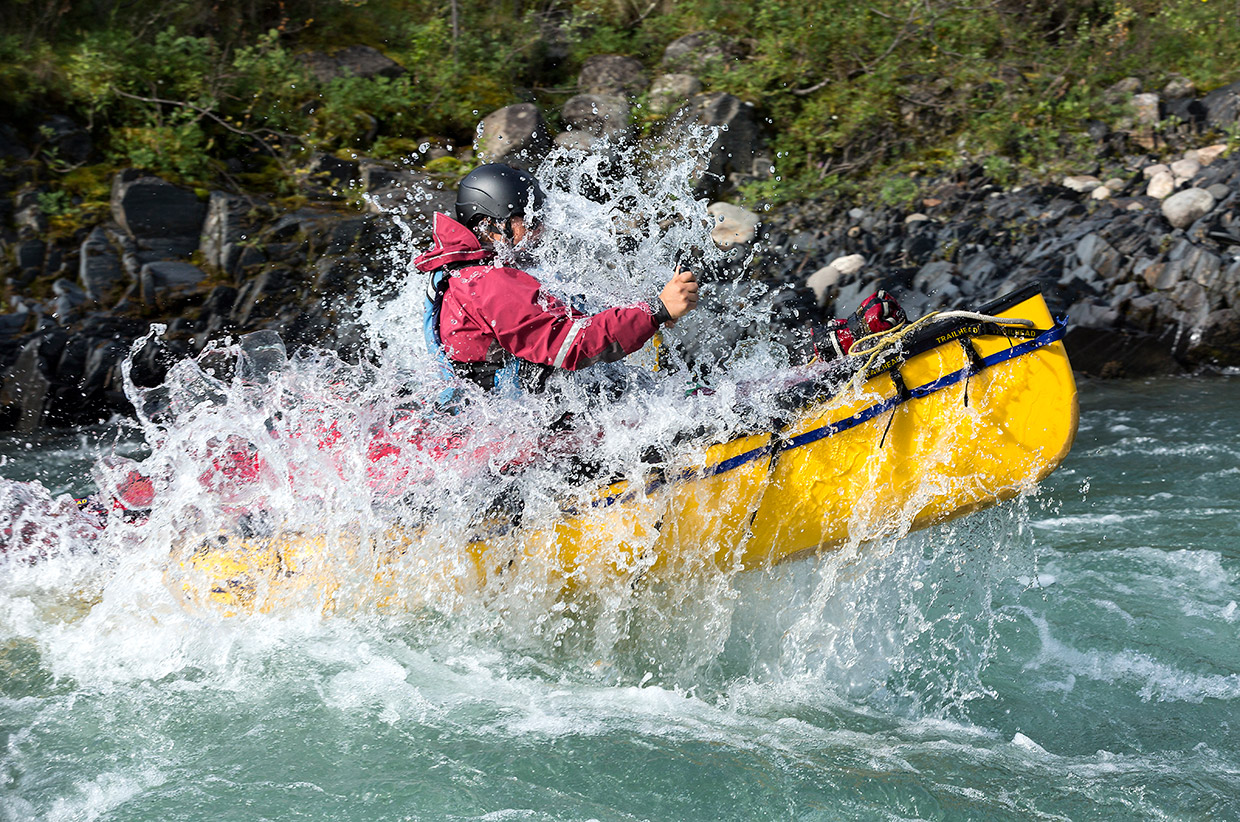
In the early morning, I was awoken by loud snorting. I had only just lifted my head to listen better when I was forcefully flipped over from back to belly inside my tent. At first I thought some of my team were messing around with me, as sort of a rookie joke on the last day, so I just shouted a few (many) expletives. What concerned me then was the lack of laughter in response to my shouting. I cautiously crawled out of my tent and there, opposite me, stood a juvenile black bear, which luckily looked far more afraid than I did. It had the look of a child that has been caught doing something wrong. There I stood, engaged in another staring match with a large, curious creature. My language of choice had woken the rest of the team and alerted them to my camping spot on the ridge. David came running up to get a closer look at the bear and a few moments later Ken fired off a bear banger and with a loud boom, the bear took off into the brush.
As we sat on the dock waiting for the plane at Rabbit Kettle Lake, we discussed the morning’s bear visit and Pablo said, ‘Of course the bear came to Dustin.’ This statement was true for the entire expedition. All the major issues on the trip happened to me. I had dropped my camera in the river early on (I dove in and got it, dropped it in a bag of rice, and thankfully it still worked for the remainder of the trip); I became ill on my birthday; I ran into the only two bears, both times on my own; and lastly, I paddled a canoe down a river that had features for which I was completely under-qualified. What helped me get through all of this was the team. Some of them made me laugh, some of them provided an ear for me to vent about my frustrations during the trip, some of them got me down the river without capsizing, and all of them showed me how to survive and enjoy a river expedition.
Dustin grew up in western Canada and three years ago, after his career as an elite level Olympic wrestler ended due to injury, he found he had 20 hours a week to fill. He bought a camera, learned how to use it, and started taking pictures of everything. His photography skills blossomed from there due to the help of some fantastic mentors and their feedback. While currently working as a photojournalist he is completing his PhD in Medicine.
Website: www.dustinsilvey.com
Facebook: /dsilveyphotography
Instagram: @silveydustin
Youtube: Dustin Silvey
Thanks to the following companies for their support of this journey:



